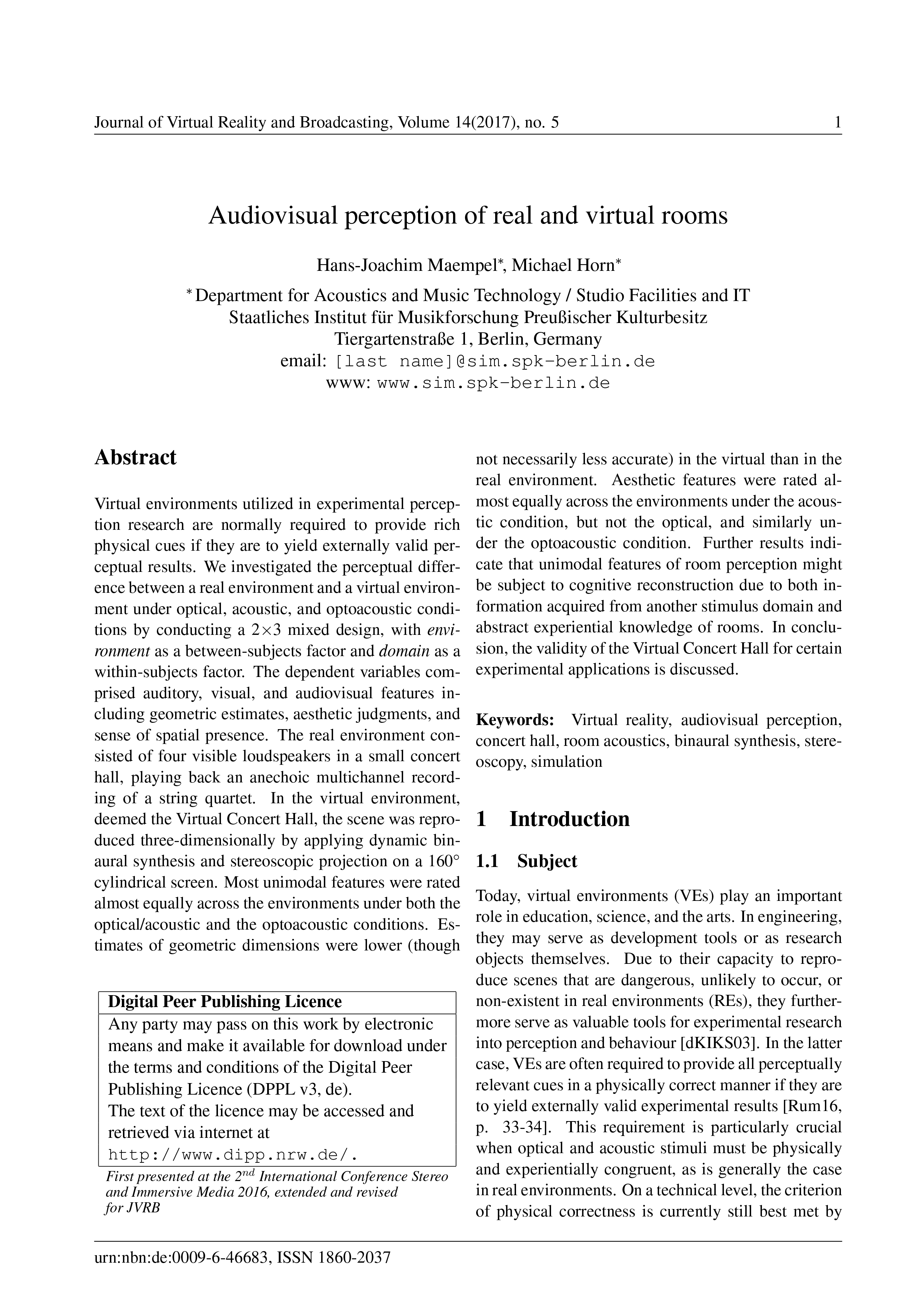Audiovisual perception of real and virtual rooms
DOI:
https://doi.org/10.20385/1860-2037/14.2017.5Keywords:
audiovisual perception, binaural synthesis, concert hall, room acoustics, simulation, stereoscopy, virtual realityAbstract
Virtual environments utilized in experimental perception research are normally required to provide rich physical cues if they are to yield externally valid perceptual results. We investigated the perceptual difference between a real environment and a virtual environment under optical, acoustic, and optoacoustic conditions by conducting a 2 x 3 mixed design, with environment as a between-subjects factor and domain as a within-subjects factor. The dependent variables comprised auditory, visual, and audiovisual features including geometric estimates, aesthetic judgments, and sense of spatial presence. The real environment consisted of four visible loudspeakers in a small concert hall, playing back an anechoic multichannel recording of a string quartet. In the virtual environment, deemed the Virtual Concert Hall, the scene was reproduced three-dimensionally by applying dynamic binaural synthesis and stereoscopic projection on a 160° cylindrical screen. Most unimodal features were rated almost equally across the environments under both the optical/acoustic and the optoacoustic conditions. Estimates of geometric dimensions were lower (though not necessarily less accurate) in the virtual than in the real environment. Aesthetic features were rated almost equally across the environments under the acoustic condition, but not the optical, and similarly under the optoacoustic condition. Further results indicate that unimodal features of room perception might be subject to cognitive reconstruction due to both information acquired from another stimulus domain and abstract experiential knowledge of rooms. In conclusion, the validity of the Virtual Concert Hall for certain experimental applications is discussed.






